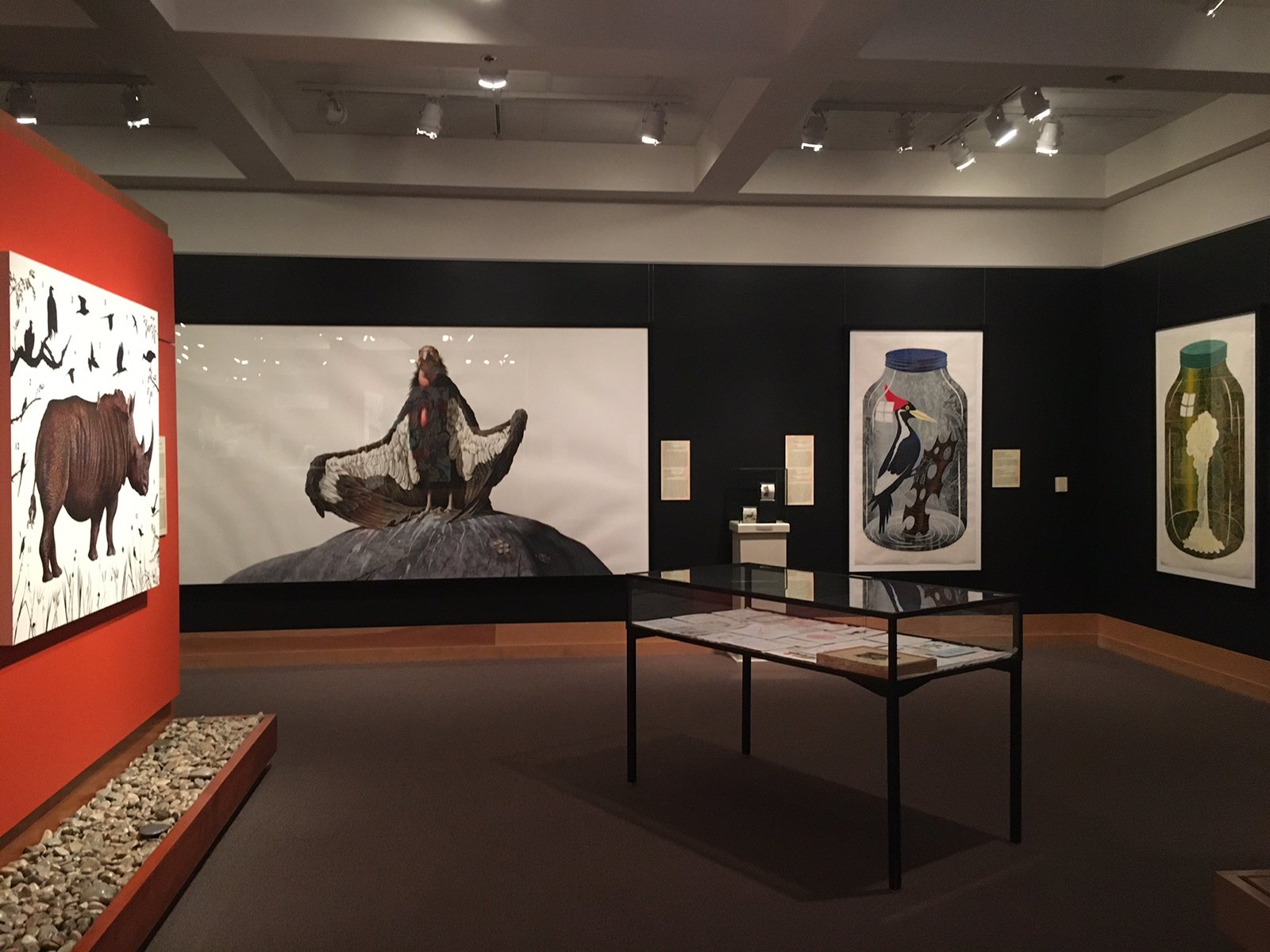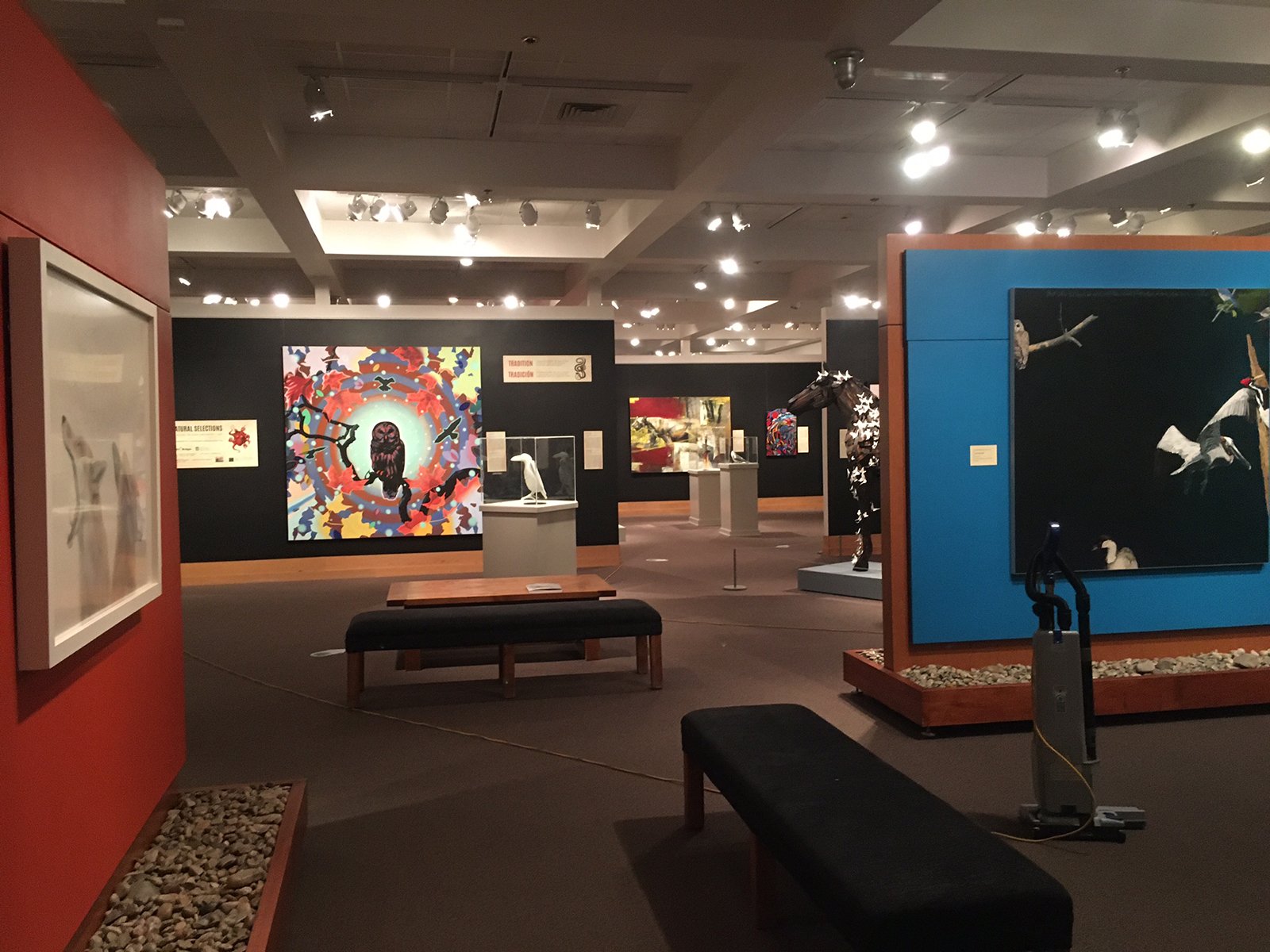Un/Natural Selections: Wildlife in Contemporary Art
Un/Natural Selections: Wildlife in Contemporary Art considers the diverse ways that contemporary artists employ animal imagery to address humanity’s interconnectedness and ever-changing relationship with the natural world. Comprised of approximately 50 artworks (c. 2000-2019) exclusively from the Museum’s permanent collection, this exhibition offers a wide range of works in a variety of media divided into four thematic sections: Tradition, Politics, Science, and Aesthetics. These sections act as overlapping chapters, investigating the ways we use animal imagery to tackle human concerns.
—
The art of James Prosek considers a duality—humanity’s compulsion to catalogue nature's vast complexity versus our limited capacity to fully achieve such an auspicious goal. Tools like maps, language, and symbols, the artist believes, can never truly explain the ecological complexity and mutuality of our world. Prosek’s Southern White Rhinoceros, Zimbabwe calls to mind the axiom, “The whole is greater than the sum of its parts.” In this and similar compositions, collections of flora and fauna belonging to the same ecosystem are accompanied by a numerical system lacking key or cipher. Animals are depicted either in full, detailed color or in dark, monochromatic silhouette, the latter recalling field guide symbols used to aid in bird identification.
The mysterious numbers and silhouettes reflect Prosek’s fascination with the human impulse to isolate organisms from a rich, interconnected system into massively simplified units for study. He believes that this isolation hinders our already-fraught quest to truly understand them. Only when we view nature as a unified whole, and seek to understand how creatures interact with and contribute to their entire sphere of existence, may we redirect the fates of species like the southern white rhinoceros.
Prosek is influenced by the Biblical story of Adam naming the world’s animals. By categorizing and naming them, Adam emphasizes the animals’ differences and places them into hierarchies. In reaction to this story, the artist poses the question: “What if we unnamed everything?” His art considers a world in which living beings are more similar than different, and what we currently perceive as distances between animals and ourselves are instead understood as liminal spaces of closeness and connection.
Ultimately my inquiry about names and labels has ended up being about boundaries. We draw lines between things in a deeply interconnected nature. We need to separate and reduce things, to name things and draw boundaries, in order to communicate, but when we do this we lose sight of the space between the things that we name. It’s that space that ties the world together, it is important to understanding the interaction of organisms in ecosystems. Language can’t fill all the spaces. It’s like that with color and with species. We can't name enough colors to fill the spectrum because it's not a bunch of units that fit in boxes, it's an undivided continuum, just as with species—they are part of an undivided evolutionary continuum. Any lines between colors that we draw in order to name them, like red, are arbitrarily drawn. There is no place in nature where red ends and orange begins, we define that place, that boundary.
Southern White Rhinoceros, Zimbabwe was inspired by a months-long sojourn to Zimbabwe and Tanzania where the artist closely observed white rhinos in the wild. He was amazed to see an ancient pictograph panel depicting rhinos not far from their living counterparts. Like Prosek’s silhouettes, rock art simplifies life into recognizable symbols. These enigmatic marks on stone, created far before written language, support Prosek's belief that art can help connect living things. As he states, “Art can articulate what words cannot.”
Lisa Simmons, Associate Curator
May 22, 2021 - August 22, 2021
National Museum of Wildlife Art, Jackson, WY
2820 Rungius Road
PO Box 6825
Jackson, WY 83002
Summer 2022
Museum of Art - Deland, Deland, FL
Fall/Winter 2022
Whatcom Museum, Bellingham, WA
Winter/Spring 2023
Gibbes Museum of Art, Charleston, SC
Summer/Fall 2023
The James Museum of Western and Wildlife Art, St. Petersburg, FL
Fall 2023 - Winter 2024
Hudson River Museum, Yonkers, New York
Winter/Spring 2024
The Fred Jones Jr. Museum of Art at University of Oklahoma


















